Super Easy Yoga Poses for Kids to Try at Home
By Dr. Himani Bisht +2 more

Get,

to manage your symptom
Get your,


4 Cr+ families
benefitted

OTP sent to 9988776655



You’ve successfully subscribed to receive
doctor-approved tips on
Whatsapp

Get ready to feel your best.

Hi There,
Download the PharmEasy App now!!


Register to Avail the Offer
Send OTPBy continuing, you agree with our Privacy Policy and Terms and Conditions

Hi There,
Sign up on PharmEasy now!!
Trusted by 4 crore+ families

OTP sent to 9988776655



You have unlocked 25% off on medicines




Code: NU25
By Dr. Himani Bisht +2 more
Table of Contents
Yoga is an ancient practice that combines gentle movements, breathing exercises, and mindfulness to enhance both physical and mental well-being1,2. For kids, this ancient practice can be a fun and playful way to stay active.
Practising yoga regularly helps children improve their flexibility, balance, and coordination. Beyond the physical benefits of yoga for kids, it also supports concentration, relaxation, and energy management (skills that are especially valuable for their growth and daily activities)3.
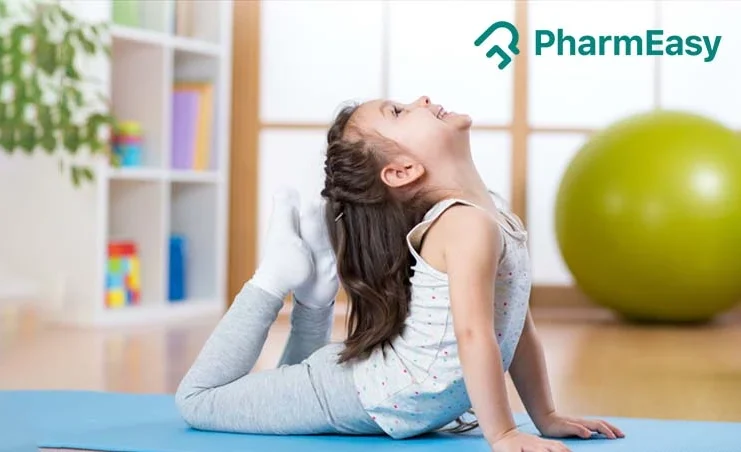
Therefore, as parents, you can feel assured that this guide introduces only simple, safe, and enjoyable yoga asanas for kids to try at home. The goal is to make yoga a fun habit that nurtures both body and mind.
Childhood, known in Sanskrit as Balyavastha, is a period of learning, curiosity, and imagination. In ancient times, children lived in Gurukuls where yoga was part of daily life, helping them develop discipline, focus, and resilience. Today, children often lack this structured environment and face numerous distractions (such as technology, media, and busy lifestyles) that can cause stress or restlessness. Yoga provides a way to restore balance, nurturing both the body and mind4. Here are some benefits of yoga for kids:
Important: Yoga is a wonderful addition to a healthy lifestyle, but it should not replace medical care or professional advice.
Introducing yoga to children is about making the practice simple, playful, and safe. Since childhood is a time of rapid growth (physically, mentally, and emotionally), yoga should be taught in a safe environment with a soft mat and constant adult supervision.
Yoga for children aged 3 to 10 years8:
Yoga for children above 10 years8:
Note: Girls should avoid strenuous yoga during menstruation and instead practice relaxation techniques.
Yoga practices instil important life values such as discipline (Yama), self-care (Niyama), calmness, and self-awareness. They encourage children to choose healthy habits and positive attitudes, which guide them toward growth and independence4. Parents can help their children practice daily using these simple yoga steps for kids9:
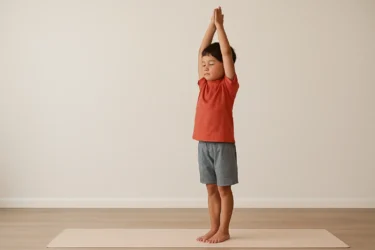
Benefits: Improves posture, strengthens legs, stretches shoulders, and may support height growth.
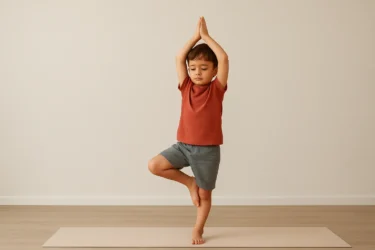
Benefits: Builds balance, focus, and leg strength.
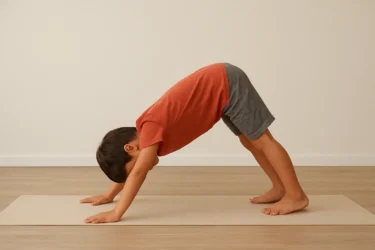
Benefits: Strengthens arms, shoulders, and legs; stretches spine.
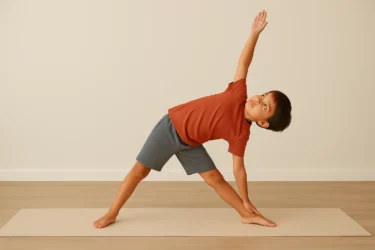
Benefits: Improves flexibility, strengthens legs, and enhances concentration.
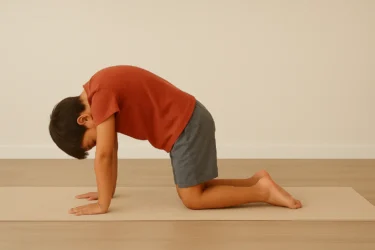
Benefits: Makes the spine flexible, relieves stiffness, and supports digestion.
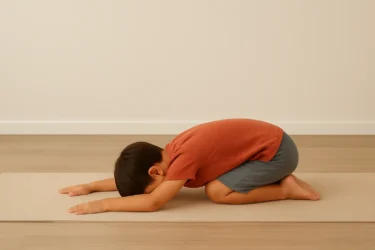
Benefits: Calms the mind, reduces stress, and improves memory and focus.
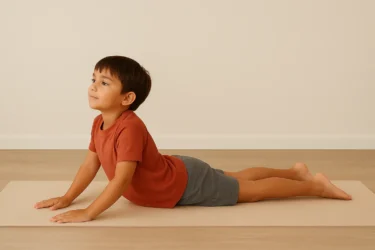
Benefits: Strengthens the back, opens the chest, and relieves fatigue.
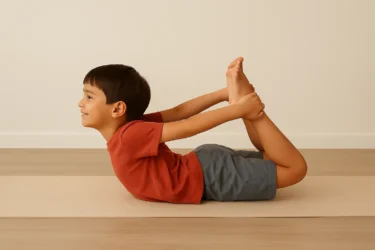
Benefits: Improves flexibility, strengthens spine, energises body.
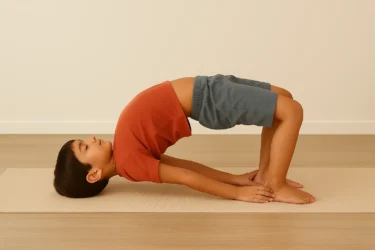
Benefits: Strengthens the back, improves digestion, and relieves anxiety.
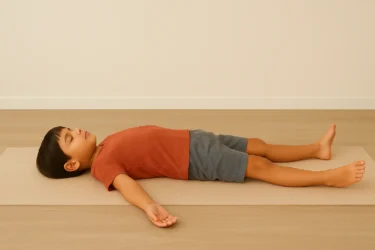
Benefits: Relieves stress, improves focus, and relaxes the mind and body.
Note: Children should always practice yoga under adult supervision, and if needed, with the guidance of a trained yoga professional to ensure safety and proper technique.
Yoga can be a wonderful experience for kids when it feels playful and enjoyable. Here are some tips to help parents while encouraging yoga poses for kids:
By making yoga asanas for kids enjoyable, storytelling-based, and non-competitive, parents and teachers can help kids see yoga not just as exercise but also as a joyful way to live with balance, confidence, and inner peace.
Also Read: Stomach Pain in Kids: Causes, Home Remedies, and Treatment Options
While yoga is safe and beneficial for children, it is important to follow a few precautions to make the practice enjoyable and risk-free2,8:
Note: Yoga should always be practised on an empty or light stomach and under the guidance of a trained teacher. If a child feels discomfort, stop immediately and provide attention or medical help if necessary.
Also Read: Baby Weight Gain Foods & Growth Tips Every Parent Should Know
Yoga is a wonderful way for children to stay active, healthy, and calm while having fun. It not only supports physical growth through better strength, flexibility, and balance but also helps kids develop focus, emotional control, and relaxation skills.
Therefore, practising yoga together at home can become a joyful family activity, strengthening bonds while encouraging healthy habits. It is also important to keep in mind that parents do not need to aim for perfect yoga poses for kids; the key is to keep sessions safe, playful and consistent. Yoga can easily become a part of a child’s daily routine, offering lifelong benefits for both body and mind with a little patience and creativity.
Also Read: Nasal Drops for Babies and Kids: Types, Uses, and Safety Guide
Any age is a good age to start yoga. Even toddlers can start by kicking and stretching and kids as young as 3 years can do simple, playful poses. However, structured practice is more suitable from around age 10 and above8.
Yes, yoga is safe and healthy when age-appropriate poses are chosen and practised under adult supervision. It supports physical fitness, emotional balance, and overall well-being1,10.
Yes, breathing exercises and mindful movements in yoga help children calm their minds, which can improve focus, attention span, and learning2,10.
A soft yoga mat is enough2. No special equipment is required, just comfortable clothing and a safe space.
Disclaimer: The information provided here is for educational/awareness purposes only and is not intended to be a substitute for medical treatment by a healthcare professional and should not be relied upon to diagnose or treat any medical condition. The reader should consult a registered medical practitioner to determine the appropriateness of the information and before consuming any medication. PharmEasy does not provide any guarantee or warranty (express or implied) regarding the accuracy, adequacy, completeness, legality, reliability or usefulness of the information; and disclaims any liability arising thereof.
Links and product recommendations in the information provided here are advertisements of third-party products available on the website. PharmEasy does not make any representation on the accuracy or suitability of such products/services. Advertisements do not influence the editorial decisions or content. The information in this blog is subject to change without notice. The authors and administrators reserve the right to modify, add, or remove content without notification. It is your responsibility to review this disclaimer regularly for any changes.
Comments

Leave your comment...
You may also like
Comments